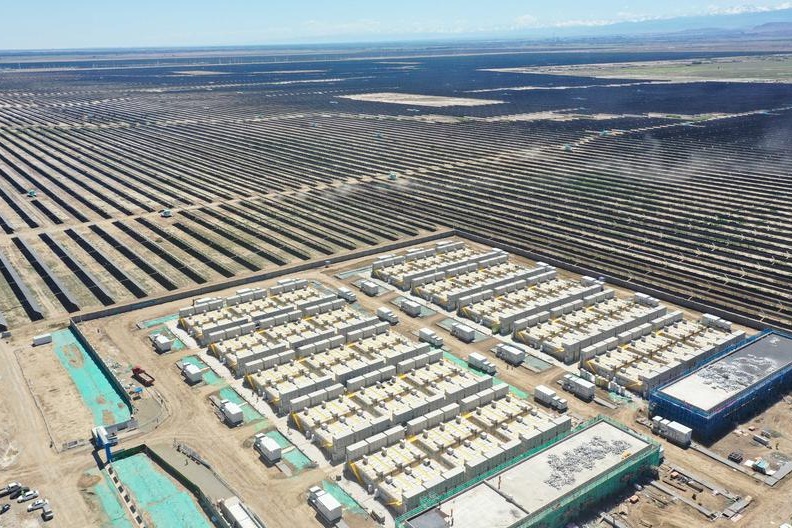Innovate or slip down value chain

Without structural reforms, China will still be the world's factory - but an increasingly costly one
As China embarks on its 12th Five-Year Plan (2011-2015), the sense of urgency is clear.
It has long been recognized that the Chinese economy is at a critical, transitional stage of development; that China must evolve from a labor-intensive, energy-hungry economy, reliant on manufacturing exports, to a modern, high-tech society with a capacity for innovation.
Events of 2010, following the fallout from the global financial crisis, have served to emphasize that in the upcoming five-year cycle, the country's leaders must deliver.
The series of labor protests that swept through the Pearl River Delta region earlier in the year were a precursor to higher wages and, consequently, rising costs of production.
? |
As the profitability of the processing industries declines, continued pressure on China to allow the yuan to appreciate is ratcheting up the pressure on the government to quicken its climb up the technological ladder and reduce its energy dependency.
Significant rises in labor costs will hit export-led sectors and drive inflation higher. The government must stimulate greater domestic consumption while it gradually phases out the most resource-inefficient elements of the export economy.
To make meaningful progress, it will have to overcome key structural and institutional barriers that are hindering China's capacity to transform itself into an innovative, internationally competitive nation.
Industrial reforms are essential to spur greater spending on research and development by China's large State-owned enterprises (SOEs).
Low incentive to innovate
In the current climate, incentives for SOEs to channel resources into research and development are low. The profits accrued by major SOEs in China can be primarily attributed to their monopoly status - the combined profits of PetroChina and China Mobile in 2009 were equal to the total profits of the country's top 500 private companies.
Yes, these SOEs do make technological progress, but with guaranteed profits of that magnitude it is hardly surprising that the incentive to innovate is low, which decreases their prospects of being competitive on a global stage.
Motivation is greater in small and medium-sized enterprises (SMEs) but, even then, many SMEs rely on cheap labor costs for the bulk of their profits. They lack the capital and simply do not possess the scale of economy to sustain innovation over the long term.
It is an indication of the level of the discrimination, which varies wildly from province to province, that exists among lenders against private enterprises in China - even though it is 12 years since the Constitution was changed to allow State-owned commercial banks to lend outside of the SOE sector.
Crucially, this is not an environment that is conducive to China's private companies making a long-term impact on international business.
An option for the government is to introduce a taxation system that rewards innovation. Higher taxes on SOEs would force them to seek profits through a more innovative business approach, rather than relying on monopoly. In addition, a tax incentive scheme could be offered to SMEs to increase research and development.
If China is willing to learn from the experiences of Japan and South Korea, then its SOEs can make considerable advances up the global chain. Both of these countries offered substantial financial support to a select group of industrial champions in each sector. The support should not be viewed as easy credit, but as an opportunity to develop cutting-edge technology that would improve China's brand image.
China is set to become the second-largest economy in the world and is already the world's leading exporter, but its reputation as a potential innovator is suppressed by its lack of recognizable brand names such as Toyota and Samsung.
There is also strong evidence that academic research from higher education institutions (HEIs) is out of touch with industry.
The amount of research funding available to Chinese HEIs is certainly not an issue. The government has increased spending by 20 percent every year for the last decade.
The government has pledged 39 billion yuan (4.49 billion euros) to the third phase of its Project 985, which focuses funding on the country's top 39 universities with the aim of making them world-class educational and research institutions.
Research output low
But there are serious concerns over how that research funding is being channeled into innovation. In China, research output - in terms of high quality research publications, truly innovative patents and evidence of knowledge transfer - is fairly low. By way of comparison, academic research in the UK is eight times more efficient than that in China, measured in terms of the relationship between input and output.
The government should give more autonomy to universities, and these institutions should in turn grant more independence to their researchers. It could also encourage more collaboration between researchers and industry.
The method used to assess research output also needs to be reformed. Assessments are too regular and too vague.
Chinese academics are forced to spend valuable time fighting for individual research funding, or competing for prestigious prizes that will boost their careers, instead of concentrating on conducting original research.
Patents registered by Chinese universities have in fact increased markedly in the last year, but they tend not to be related to new inventions, but rather improvements made to existing designs.
Development of human resources is vitally important.
The government has to ensure its "Thousand People Plan", which is designed to attract skilled personnel from overseas, translates into concrete examples of innovation.
Chinese President Hu Jintao first raised the concept of "scientific development" - referring to the need for China to upgrade to a more innovative economy - in 2003 during the SARS crisis.
More than seven years on, China is on the cusp of this transformation. But for it to succeed, China's leaders will need to make profound changes to the way government funds are channeled into innovation.
Without necessary structural reforms, China will still be known as a factory for the world - but an increasingly expensive one.
The author is head of the School of Contemporary Chinese Studies at the University of Nottingham and director of the Globalisation and Economic Policy Centre's China and the World Economy program.
Today's Top News
- WIPO: China retains its position as the global leader with 1.8 million patent applications
- Xi sends congratulations to 20th theory seminar between CPC, CPV
- China, Spain to build more strategically resilient, dynamic, internationally influential bilateral ties: Xi
- Xi holds welcome ceremony for Spanish king
- Astronauts' return mission proceeds smoothly
- Vocational education helps youth break the cycle of poverty






























